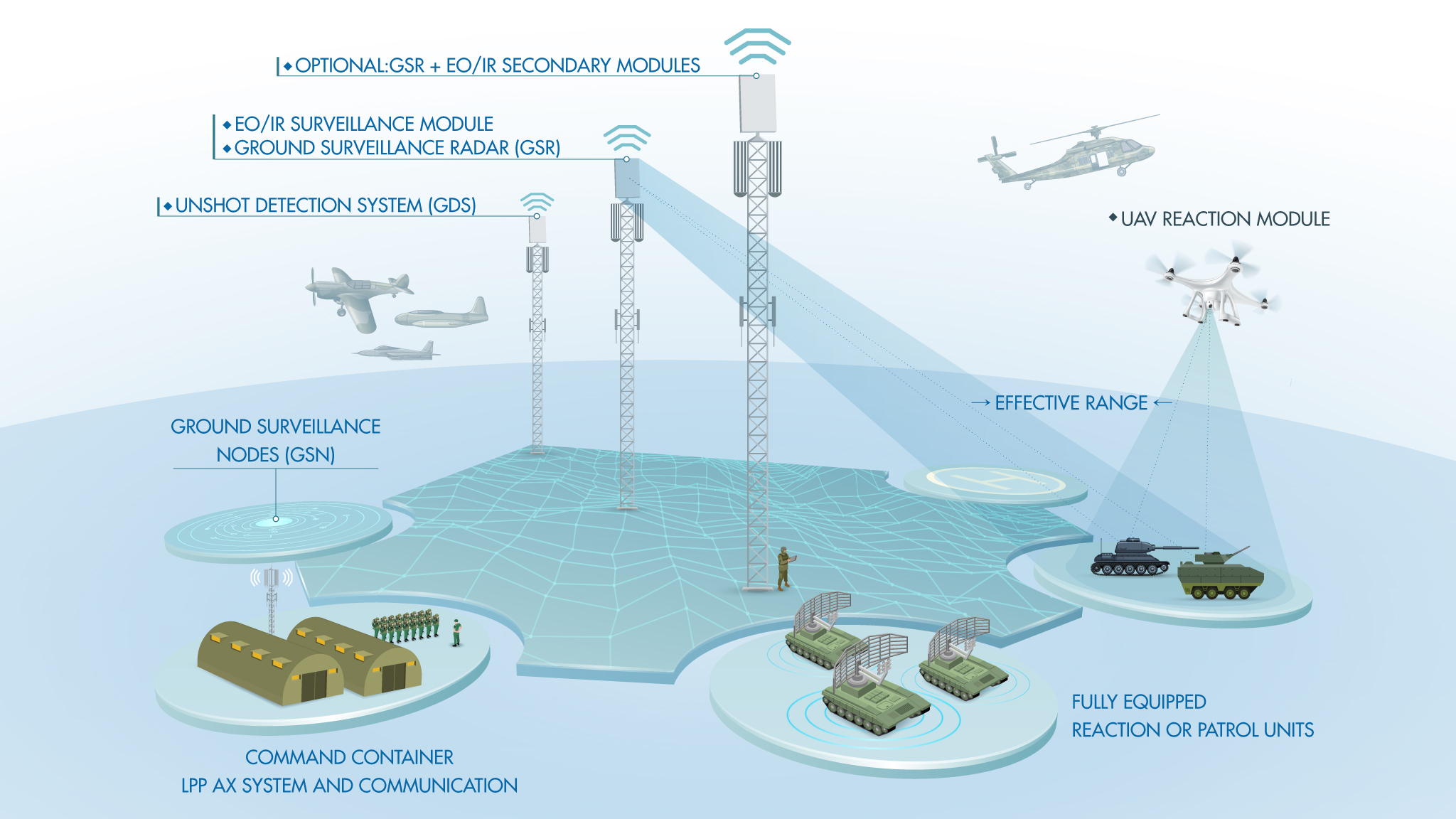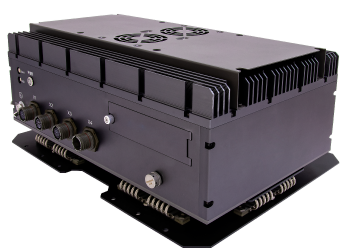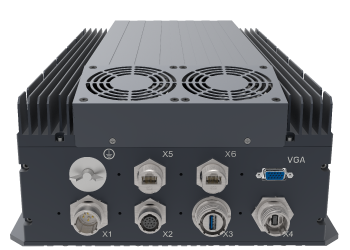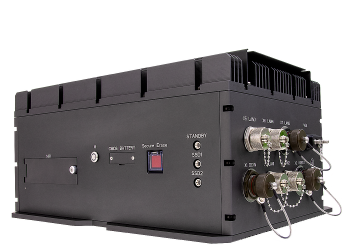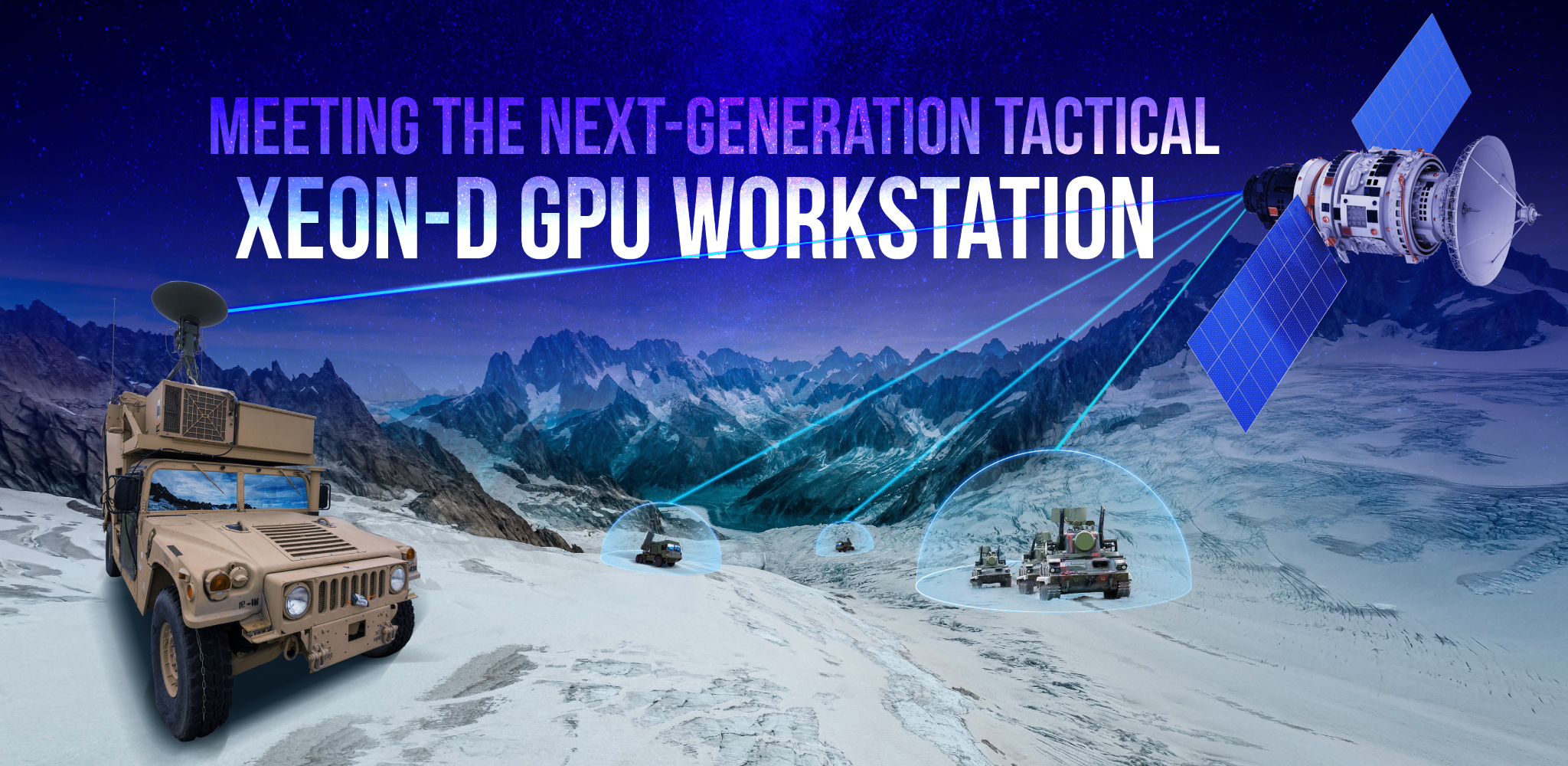
|
|
C5ISR (Command, Control, Communications, Computers, Cyber, Intelligence, Surveillance, and Reconnaissance) is essential in modern battlefield operations because it enables commanders to make better decisions, improve situational awareness, enhance coordination, and protect against cyber threats, while also enabling faster and more agile responses to changing circumstances.
|
-
C5ISR - Connecting the dots for Information superiority
-
Data acquisition:
C5ISR relies on the acquisition of large volumes of data from various sources, including sensors, cameras, and communication systems. High-performance computing can enable faster and more efficient data acquisition by processing large amounts of data in real-time.
Data processing:
Once the data has been acquired, it needs to be processed quickly and efficiently. High-performance computing can enable faster data processing and analysis, enabling commanders to make more informed decisions in real-time.
Analytics:
High-performance computing can enable complex analytics and machine learning algorithms that can identify patterns and predict outcomes. This can be particularly useful in identifying potential threats and responding to them more effectively.
Communication:
High-performance computing can enable faster and more secure communication between forces, including voice, video, and data transmission. This can improve coordination and enable real-time decision-making.
Simulation:
High-performance computing can be used to create realistic training and simulation environments, allowing soldiers to train in realistic scenarios without the risks associated with live exercises. This can help improve their skills and decision-making abilities.
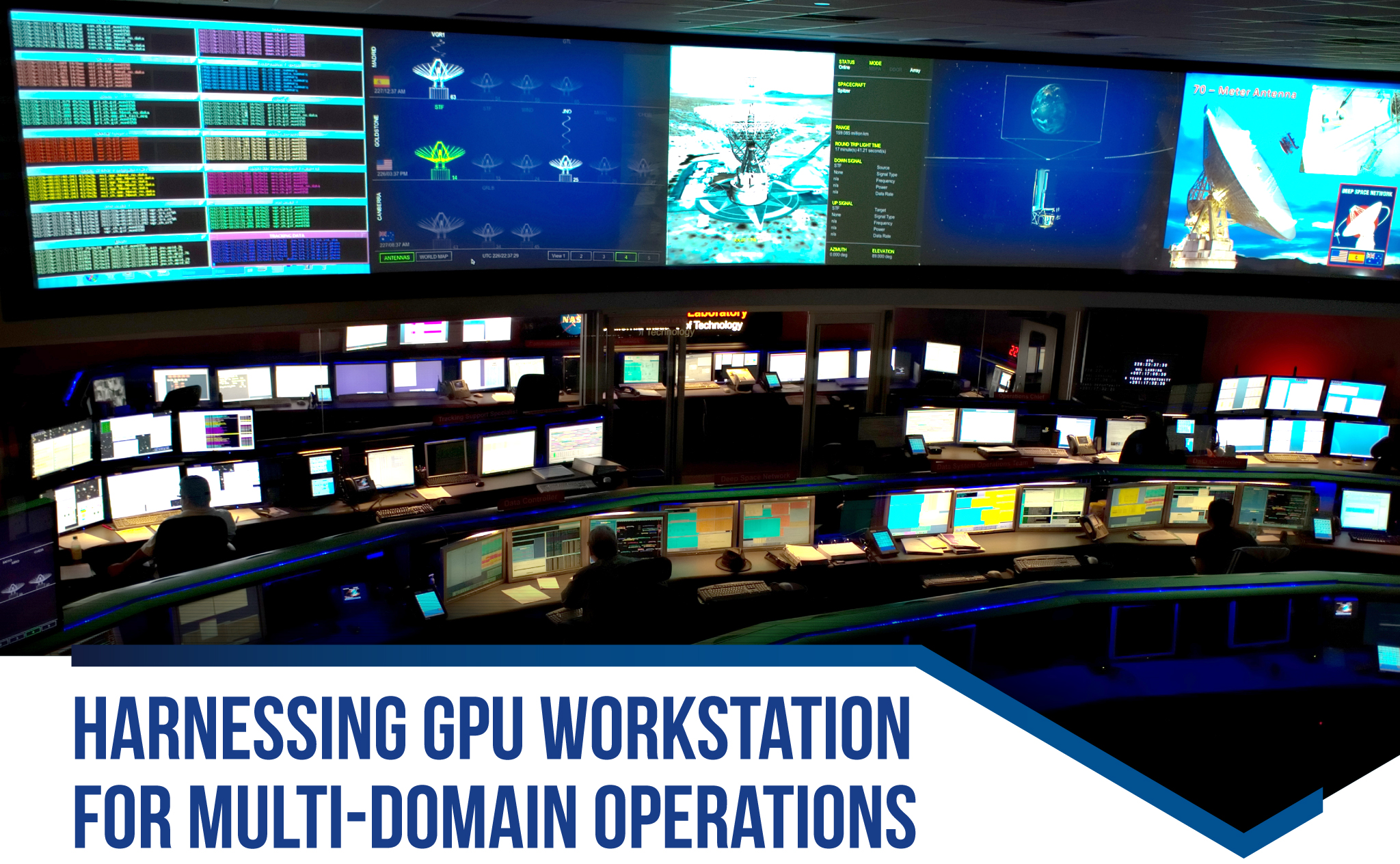
GPU servers play a critical role in modern warfare because they can help provide faster, more accurate data analysis and improve situational awareness, which can be critical in responding to threats and making informed decisions on the battlefield. |
|
|
Faster processingGPU servers can process large amounts of data faster than traditional CPU-based systems. This is particularly important in the military, where real-time data analysis can be critical to making informed decisions and responding quickly to changing situations. |
|
|
Cyber securityGPU servers can be used to monitor and analyze network traffic to detect potential cyber-attacks. They can also be used to perform complex cryptography operations to ensure secure communications. |
|
|
Predictive analyticsGPU servers can perform complex analytics and machine learning algorithms that can help predict outcomes and identify potential threats. This can be particularly useful in identifying potential cyber-attacks or other security threats. |
|
|
Simulation and trainingGPU servers can be used to create realistic training and simulation environments, allowing soldiers to train in realistic scenarios without the risks associated with live exercises. |
|
|
Improved situational awarenessBy processing data from multiple sources, including drones, sensors, and other devices, GPU servers can provide commanders with a more complete picture of the battlefield. This can help them make better decisions and respond more effectively to threats. |

- 7StarLake Xeon-D GPU Multi-Cores Workstations
-
AV800
◆ CPU > Xeon-D Skylake D-2183IT
◆ GPU > Tesla T4
◆ NIC > 2x10G (SFP+) , 2x10G
◆ Storage > 1xNVMe U.2- 16TB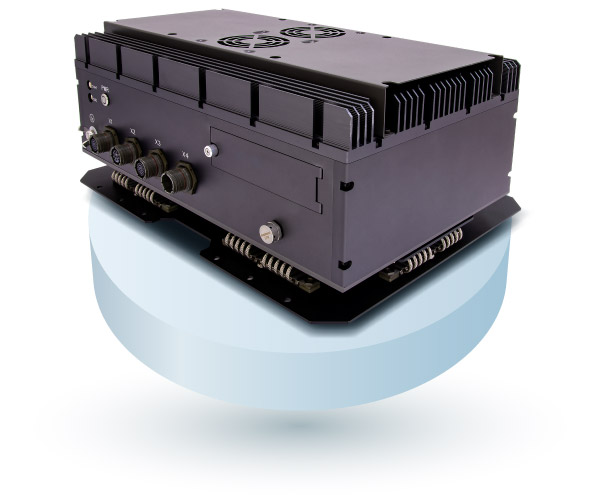
SR800-D21
◆ CPU > Xeon-D Skylake D-2183IT
◆ GPU > MXM A2000
◆ NIC > 2x1G , 2x10G SFP+
◆ Storage > 2x 2.5” 2TB SATAIII MLC SSD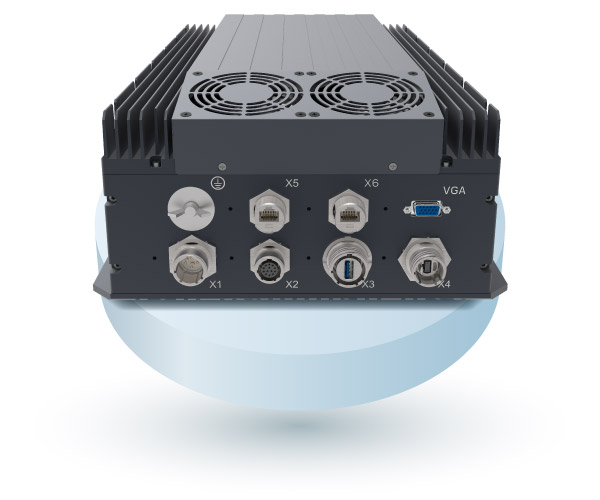
AV800-L4
◆ CPU > Xeon-D Skylake D-2183IT
◆ GPU > Ada Lovelace L4
◆ NIC > 2x10G (SFP+) , 2x10G
◆ Storage > 1xNVMe U.2- 16TB
7StarLake Xeon-D GPU Multi-Cores Workstations
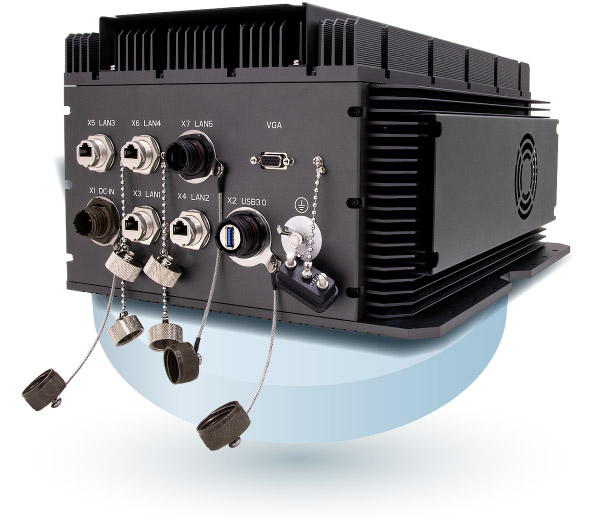
AV800-D27-A45
◆ CPU > Xeon-D Icelake D-2796NT
◆ GPU > MXM A4500
◆ NIC > 2x25G(SFP28) , 2x10G
◆ Storage > 1xNVMe 2 x U.2- 32TB Write Bandwidth to 8GB/s
◆ CMOS > YES
◆ H/W AES > YES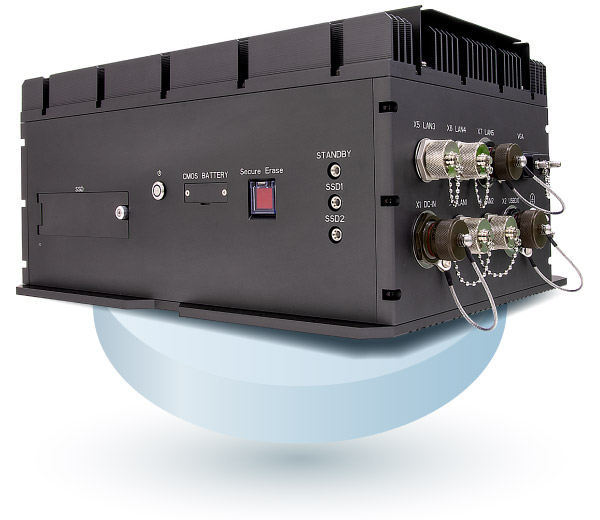
AV800-D27
◆ CPU > Xeon-D Icelake D-2796NT
◆ GPU > MXM A4500
◆ NIC > 1x200G, 2x10G
◆ Storage > 2xNVMe U.2- 32TB Write Bandwidth to 8GB/s
◆ CMOS > YES
◆ H/W AES > YES
- Server-class computing performance Intel Xeon-D Ice Lake-D
-

Xeon-D 2183IT
Specification
Xeon-D 2796NT
Skylake
Code Name
Icelake
AV800
SR800-D21
AV800-L4
7StarLake Model
AV800-D27-A45
AV800-D27

Architecture
The Ice Lake-D is based on the 10nm Sunny Cove microarchitecture, while the Skylake-D is based on the 14nm Skylake microarchitecture.
Performance
The Ice Lake-D has a higher core count and improved single-threaded performance compared to the Skylake-D. The Ice Lake-D also supports faster memory, PCIe Gen4, and Intel Deep Learning Boost (DL Boost) technology for AI acceleration.
Power Efficiency
Ice Lake-D is more power efficient compared to Skylake-D as it is based on a smaller manufacturing process node.
BGA
Ice Lake-D processors use the FCBGA2579 BGA while Skylake-D processors use the FCBGA2518 BGA
Availability
Ice Lake-D processors were released in 2021, while Skylake-D was first released in 2017 and has since been succeeded by the Cascade Lake and Cooper Lake families.
AV800
SR800-D21
AV800-L4
AV800-D27-A45
AV800-D27
Intel D-2183IT
Specification
Intel D-2796NT
Skylake
Code Name
Icelake
2.2 GHz
Base Frequency
2.2 GHz
3.0 GHz
Max Turbo Frequency
3.10 GHz
16 / 32
Cores / Threads
20 / 40
100 W
TDP
120 W
22 MB
Cache
30 MB
DDR4-2400
Memory Support
DDR4-2933
512 GB
Max Memory Capacity
1TB
PCIe Gen 3 Max: 32 Lanes
PCIe Lanes
PCIe Gen 4 Max: 32 Lanes
FCBGA2518
BGA
FCBGA2579
- Accelerate Workloads Efficiently NVIDIA L4
-
The NVIDIA Ada Lovelace L4 Tensor Core GPU delivers universal acceleration and energy efficiency for video, AI, virtualized desktop, and graphics applications in the enterprise, in the cloud, and at the edge. It is a half-height (low profile), half-length, single slot card featuring 24 GB of GDDR6 memory, x16 PCIe Gen4 connectivity at a 72 W maximum power envelope. It is a passively cooled card with a superior thermal design-requiring system airflow to operate and handles challenging ambient environments with ease (NEBS-3 capable).
Powered by the NVIDIA Ada Lovelace architecture, L4 provides revolutionary multi-precision performance to accelerate deep learning and machine learning training and inference, video transcoding, AI audio (AU) and video effects, rendering, data analytics, virtual workstations, virtual desktop, and many other workloads.
With NVIDIA’s AI platform and full-stack approach, L4 is optimized for inference at scale for a broad range of AI applications, including recommendations, voice-based AI avatar assistants, generative AI, visual search, and contact center automation to deliver the best personalized experiences. As the most efficient NVIDIA accelerator for mainstream use, servers equipped with L4 power up to 120X higher AI video performance and 2.7X more generative AI performance over CPU solutions, as well as over 4X more graphics performance than the previous GPU generation. NVIDIA L4’s versatility and energy-efficient, single-slot, low-profile form factor make it ideal for global deployments, including edge locations.
AV800

AV800-L4
Nvidia T4
Specification
Nvidia L4
Turing
Architecture
Ada Lovelace
2560
CUDA Cores
7424
130 (INT8) or 65 (FP16)
Tensor Cores
485 (INT8) or 242 (FP16)
8.1 TFLOPS
Peak FP32 Performance
30.3 TFLOPS
65 TFLOPS
Peak INT8 Performance
485 TFLOPS
16 GB GDDR6
Memory Size
24 GB GDDR6
300 GB/s
Memory Bandwidth
300 GB/s
PCIe 3.0 x16
PCI Express
PCIe 4.0 x16
Low Profile
Form Factor
1-slot Low Profile
75W
Power Consumption
72 W

Over 4X Higher Real-Time
Rendering Performance
Over 3X Higher
Ray-Tracing Performance
2.7X More Generative
AI Performance
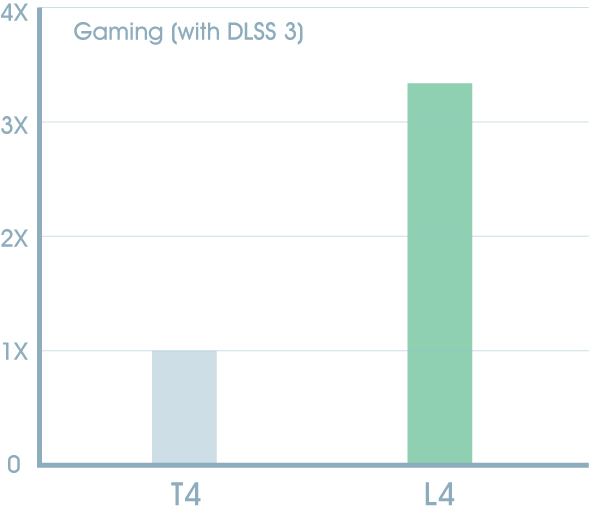

L4 Visual Computing Performance L4 Generative Al Performance
- Breaking Barriers: Elevate Performance with NVIDIA MXM architecture
-
Achieving C5ISR requires military workstations continuously ingesting, processing, analyzing and disseminating ocean of information to facilitate ultra-rapid decision making. Concurrently, since modern military workstations are typically housed in extremely space-constrained areas and need to survive in the most demanding environments, it is paramount for defense industry to strike the right balance between SWaP(size, weight, power) and compute-intensive AI/ML workloads.
Small Form Factor
Maximizing onboard functional density with minimized physical space is one of the crucial factors in military operation. By leveraging MXM architecture, military workstation can be designed with more flexibility and allow to be integrated into various military application.
Compacted
The benefits of MXM architecture go beyond just size and weight, as it also offers low power consumption and improved thermal management, allowing for building a IP65 and fanless architecture for the harsh environments in battlefield.
High-End Performance
With advanced graphics capabilities and lightning-fast processing speeds, MXM GPU architecture enables the Edge device to achieve innovative multi-precision performance for the diverse graphics-intensive military applications, including Deep Learning, AI training, anomaly detection, aerial surveillance, UAV, target acquisition.
Built on NVIDIA Ampere architecture and featuring up to 5,888 CUDA cores, 46 RT Cores, and 184 Tensor Cores, Nvidia RTX MXM series is able to deliver unparalleled AI-accelerated performance and superior visual-analyze capabilities. Designed with PCIe Gen 4 interface and up to 16GB GDDR6 memory, Nvidia MXM series is also capable of delivering high-speed data transfer, which is the backbone for developing Edge AI workflows and is the ultimate solution for mission-critical efficacy.
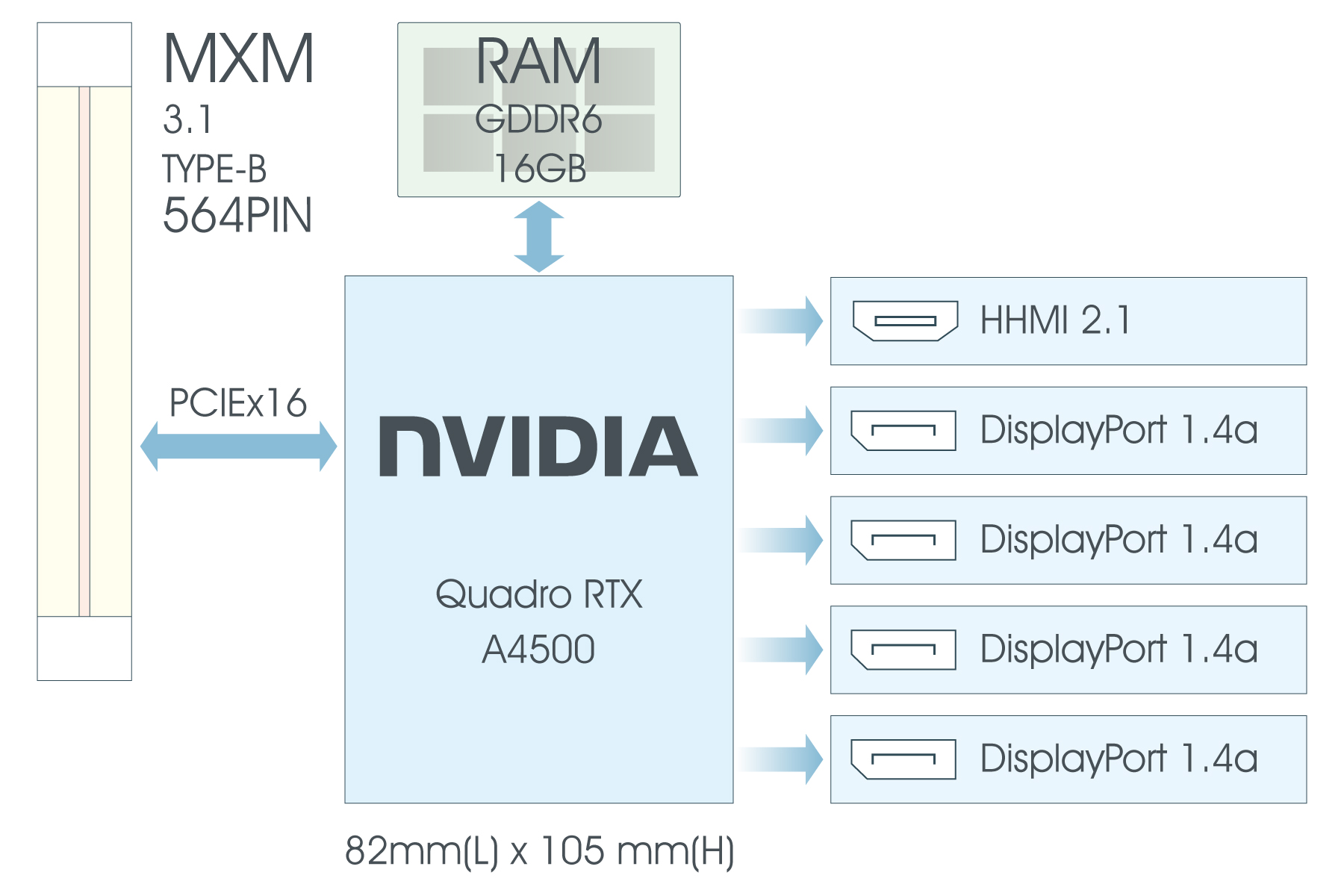

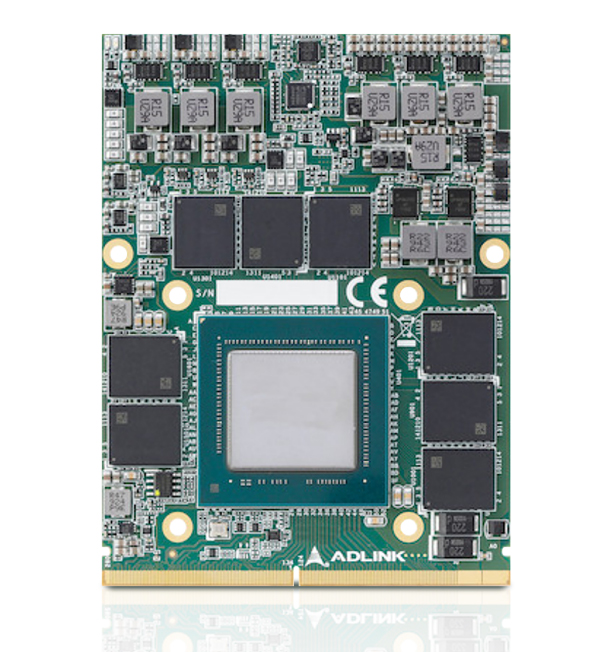
Nvidia RTX A2000 MXM
Specification
Nvidia RTX A4500 MXM
NVIDIA Ampere architecture
Architecture
NVIDIA Ampere architecture
2,560
CUDA Cores
5,888
80
Tensor Cores
184
20
RT Cores
46
8.25 TFLOPS peak FP32 performance
TFLOPS
17.66 TFLOPS peak FP32 performance
4GB/8GB GDDR6, 128-bit
Memory
8GB/16GB GDDR6, 256-bit
192 GB/sec
Memory Bandwidth
512 GB/sec
60 W
Max Power Consumption
115 W
MXM 3.1 Type A
Form Factor
MXM 3.1 Type B
4x DisplayPort 1.4, HDMI 2.1
4K at 120Hz or 8K at 60HDisplay Support
4x DisplayPort 1.4, HDMI 2.1
4K at 120Hz or 8K at 60Hz
- Excellence through certification Field-ready MIL-STD-461/1275
-

MIL-STD-461 is an important standard in the military because it outlines the requirements for electromagnetic compatibility (EMC) and electromagnetic interference (EMI) control for electronic equipment used by the military. This standard is necessary to ensure that military electronic equipment can function reliably and effectively in the presence of electromagnetic fields, which are abundant in military environments.
Military operations often involve the use of various electronic devices, such as radios, computers, and radar systems. These devices emit electromagnetic radiation, which can interfere with the proper operation of other electronic devices in the same vicinity. In addition, military environments can be harsh, with high levels of electromagnetic interference from sources such as radar, radio communications, and other electronic equipment.
By following MIL-STD-461, military equipment manufacturers can ensure that their products meet stringent EMC and EMI requirements, which helps to prevent interference between different electronic devices and maintain reliable operation in harsh military environments. This standard also helps to ensure that military equipment can operate in close proximity to other equipment without causing harmful interference.
Overall, MIL-STD-461 is important in the military because it helps to ensure that electronic equipment used in military operations is reliable, effective, and can operate safely in the presence of electromagnetic fields.
MIL-STD-1275 is an important military standard that defines the requirements for electrical power systems in military ground vehicles. This standard is critical because it ensures that the electrical power systems in military vehicles can operate reliably in the harsh conditions of military environments.
Military vehicles must be able to withstand extreme temperatures, shock, and vibration, as well as electromagnetic interference from other military equipment. The MIL-STD-1275 standard provides a set of guidelines for the design and testing of electrical power systems to ensure that they can withstand these conditions and still function properly.
The standard covers a range of requirements, including voltage levels, power quality, and protection against power surges and transients. Compliance with the MIL-STD-1275 standard is essential to ensure the reliable operation of military ground vehicles and to minimize the risk of equipment failure and mission disruption.
In summary, MIL-STD-1275 is important in the military because it helps to ensure that electrical power systems in military ground vehicles are reliable and can operate effectively in the harsh conditions of military environments.
